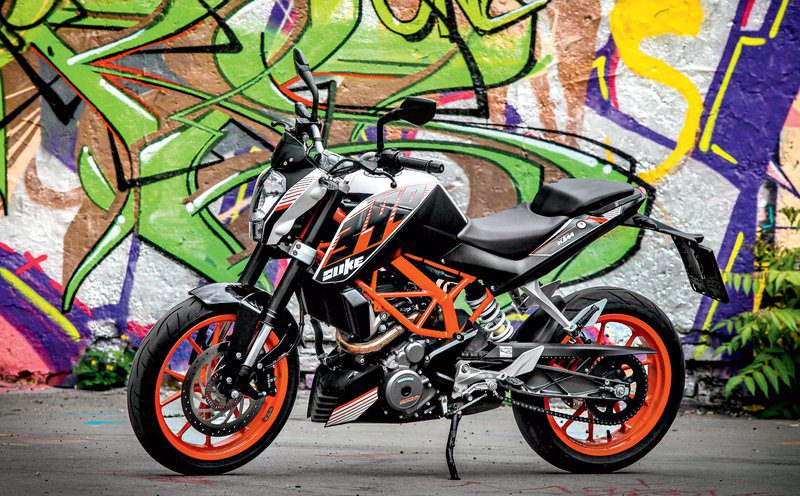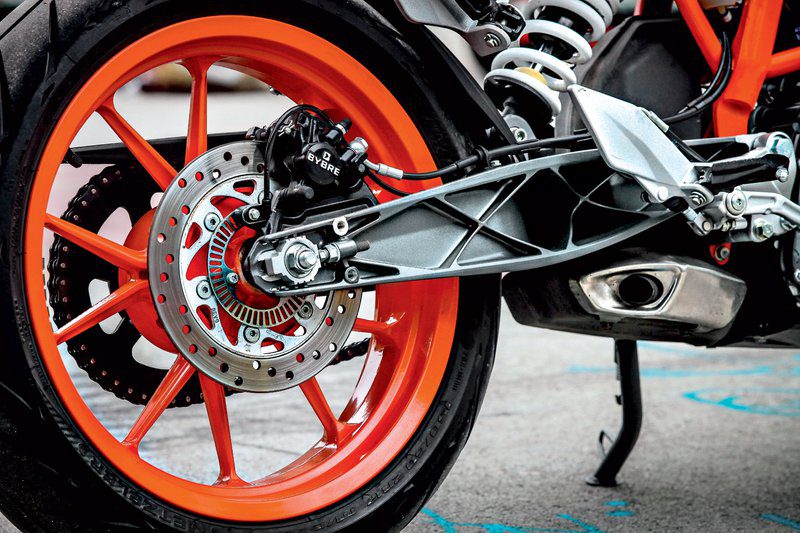
Test: KTM 390 Duke
Content
Text: Primoж манrman, photo: Aleш Pavleti.
In Mattigoffen, KTM President Stefan Pierer was already thinking about the situation before the crisis, around 2007. Motorcycle houses, especially Japanese ones, have still taken root in a similar way and have introduced new models to the market every year. Marketers were always inventing new old tricks, but at the same time they forgot that the purchasing power of the population was aging and that it was necessary to solve problems with the younger ones.
The market was saturated with a crisis, the economy cooled down, warehouses in Japan were filling up, traders groaned, profits were decreasing. On the other hand, young people more and more enjoyed tapping on computer keyboards and indulging in adrenaline-filled pleasures in the virtual world. The picture was somewhat different in less developed but rapidly developing parts of the world, especially in Southeast Asia, China and India, where there was no crisis.
On the contrary, the spiral of economic growth there was (was) overwhelming. There was (was) a motorcycle with a special status, as in our country about 50 years ago, when the “three-stage” Tomos or, yes, the Lambretta prestige, was the concept and basis of Slovenian mobility.

Pirer told them: “The biggest challenge for the motorcycle industry is how to attract the attention of the younger generation to motorcycles and make motorcycles as interesting as, say, computers. But we need to know how to get them involved.” The idea of little dukes was born, born of the ideas and initiatives of teenagers in Facebook profiles created for this very reason. And part of this story is also our "stuntman" Rok Bagorosh, who burns tires and the wishes of youth on Duki 125, 200 and 690.
KTM found them in a sweat
In the spirit of continuing this strategy, the Austrians teamed up with the Indian company Bajaj Auto and in the spring of 2011 offered the first Duke model of a smaller volume - a 125-cc single-cylinder. KTM and Indians? Risky move. But the motorcycle was cool and attractive, in the style of Kiska's houses. It wasn't expensive. In the first half of the year, around 10.000 vehicles were sold, and it turned out that the target group was not only teenagers, but also older motorcycle "returnees" who needed a simple two-wheeler to find this perhaps already lost feeling. And their scooter doesn't smell. Encouraged by the good results, the Austrian-Indian alliance sent a 2012 cubic meter version to the market in 200, mainly with the Indian market in mind, where the 125 cubic meter models are not exactly popular. The basis of both models is the same, only the engine has been changed in the larger version.
The youngest in the family
But the connection between KTM-Bajaj did not stop and before this season it presented a new Duke with a volume of 390 cubic meters on the already well-known platform of older brothers. Why 390? KTM replies: “Because this is the size of the engine that is more or less present in all markets around the world. While the 125 and 200 cubic feet siblings are targeting Europe and Asia, the 390 is targeting the global market. ” The engine itself weighs 36 kilograms, and the combined motorcycle weighs 139 kilograms dry, which is only 10 kilograms less than the 200 cc version. The car has been completely redesigned and is capable of developing 44 hp. at 9.500 rpm, sixth gear has been added to the newly designed gearbox, the hardware is robust, including Bosch ABS (switchable).

How does it work?
At first glance, the new Duke is a true member of the family, with a distinctive design that young people will love; bold and fresh. The details show it's not exactly from the prestige fleet, say a rear swingarm or front fork clamp, and an Indian (otherwise rugged) brake kit. The digital meter offers a wealth of information, from current consumption to revs to current gear, but you have to get used to the size of the numbers and letters. The position is straight, the legs are slightly bent, the handlebars are open, slightly moved forward.
He wakes up with a rattling sound coming from an exhaust pipe hidden under the engine. This one actually wakes up at the 4.000 mark while driving, sings more specifically, and its curve rises continuously and steadily up to 10.000 rpm. And he likes to be pushed higher, so acceleration is a real pleasure, and with every meter this Dukec becomes pleasant. Playful. Even on the roads outside the settlement, it already gives quite a real motorcycle feeling, it is easy to maneuver, and at the same time it is not difficult. This is where the sixth gear comes in. Perhaps it lacks only the final sharpness, like the dot on the i.
The question in the title has no answer or should be instead of the word or. Without the joint work of the Austrians and Indians, this motorcycle would not exist, because, both say, they have learned a lot from each other over the years of cooperation. And we are from them. First of all, the fact that young people still have passion. All you have to do is press the right button, even if it's a computer.
Basic data
Sales: MOST, doo in SELES RS, doo
Test model cost: 5.190 €
Technical information
engine: single-cylinder, four-stroke, 373,2 cm3, liquid cooling.
Power: 32 kW (44) at 9.500 rpm
Energy transfer: Transmission 6-speed, chain.
Frame: steel pipe.
brakes: front disc Ø 300 mm, 4-piston brake pads, rear disc Ø 230 mm, single-piston caliper.
Suspension: USD WP front fork, Ø 43 mm, 150 mm travel, rear double swingarm, WP single shock, 150 mm travel.
Tires: 110/70-17, 150/60-17.
Growth: 800 mm.
Fuel tank: 11 l.
Wheelbase: 1.367 mm.
Weight: 139 kg.
We praise and reproach
Appearance and design
Total
driving position
Steering
The cost of some pieces of equipment
Lack of conceptual clarity
